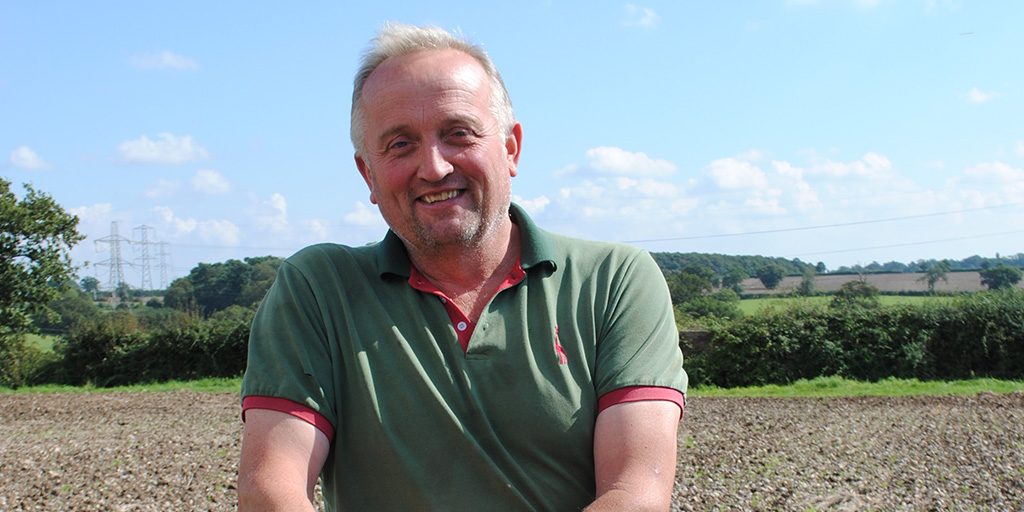A Hertfordshire arable farmer who recently switched from granular fertiliser to a liquid system is reaping the rewards of
liquid fertiliser environmental benefits. Alongside labour saving, boosting performance and improving the
farms environmental footprint.
Jimmy Hunter is a second generation farmer whose family has run J S Hunter and Sons from Pursley Farm, Radlett for 60 years. Historically the farm was home to a dairy herd which was disbanded in 1996. The farm now operates an arable enterprise across 3500 acres of grade three quality arable land including London clay, loam and gravel soils, which supports
winter milling wheat and feed barley,
oilseed rape,
beans, AD
maize and rye.
The farm is nutrient hungry, particularly lime, and many of the fields are small and prone to water logging and are close to water courses, ditches and urban areas. There are 6m margins on every ditch and most fields have footpaths.
Cultivations are based on minimum tillage that employs a sub-soiler at a depth of 10-12 inches or a tined
Horsch Cruiser to a depth of 5-6 inches, to break up any compaction pans and to lift the tramlines after harvest. This is followed by a
Horsch Joker to create a seedbed prior to drilling with an 8m Rapid and a roll.
The company always used to be on liquids supplied by a different supplier for 10 years but price parity to solids at the time and spare labour, meant the decision was taken to switch to granular ammonium nitrate. However, Mr Hunter says that spreading granular fertiliser was messy, inaccurate, time consuming and not environmentally friendly, compared to the liquid fertiliser environmental benefits on offer.
“We are very conscious of the environment and our surroundings,” he says. “It is one of the reasons why last year we took the strategic decision to switch from granular fertiliser to a liquid fertiliser system.”
At the time the situation was clearly unsatisfactory and a solution to the problem had to be found. Mr Hunter was convinced that liquids offered the best option.
“Applying liquids is less labour intensive than a granular equivalent,” he says. “We have reduced staff numbers from six to three and an improvement in liquid fertiliser application technology meant that accuracy is now much better and striping is negligible. We can also be more flexible on application timing.”
Where to get his liquid fertiliser from was a relatively straightforward exercise according to Mr Hunter because his agronomist Ryan Hudson of
Velcourt Agronomy is an advocate of OMEX Agriculture’s liquid and solution fertiliser system, which is recognised for its quality product, and efficient delivery and service.
In the spring of 2021 the business installed two 50t and two 30t OMEX liquid fertiliser tanks, with two additional tanks scheduled to go in next season potentially. The tanks are regularly topped up in season within 24 hours of placing an order, says Mr Hunter.
Mr Hunter can apply 25ha of liquid fertiliser per sprayer tank full along with a further 75ha from a bowser.
With land up to 10 miles from the farm Mr Hunter runs the liquid fertiliser spraying operation using a 5000l, 32m self propelled
Fendt with boom section cut-off and a 15000l following bowser.
“My son Hugh and I do all the spraying,” he explains. “I drive the sprayer which gives me the chance to see the crops from above.”
When on a granular fertiliser regime the farm only ever produced low grade milling wheat from varieties such as Cordiale. This year the quality of spring and winter wheat using OMEX liquid fertiliser achieved full Class 1 milling specification with Skyfall and the Group 4 hard wheat Gleam achieved good yields.
A liquid fertiliser system has many environmental benefits too. Gone are the 700, one tonne bags which were always a disposal hazard and required huge under cover storage. Machines that once had to stay outside over winter are now stored under cover. Some sheds are also rented out, which brings in a much-needed extra revenue stream.
In the past the granular fertiliser system would cause striping down the rows, especially in the wind and the headlands were always a challenge trying to stop product being spun into the hedge. Liquids can be applied accurately right up to the field boundary and there is no concern of over or under spraying, which is aided by boom section control on the sprayer, says Mr Hunter.
“We just couldn’t get the uniform spreading that we needed to optimise crop performance. We had too much under and over application,” he says. “And I was keen to reduce machinery and labour to keep rising production costs in check.”
Want to find out more about Liquid Fertiliser Environment benefits? Speak to your local FACTs qualified advisor,
here.
